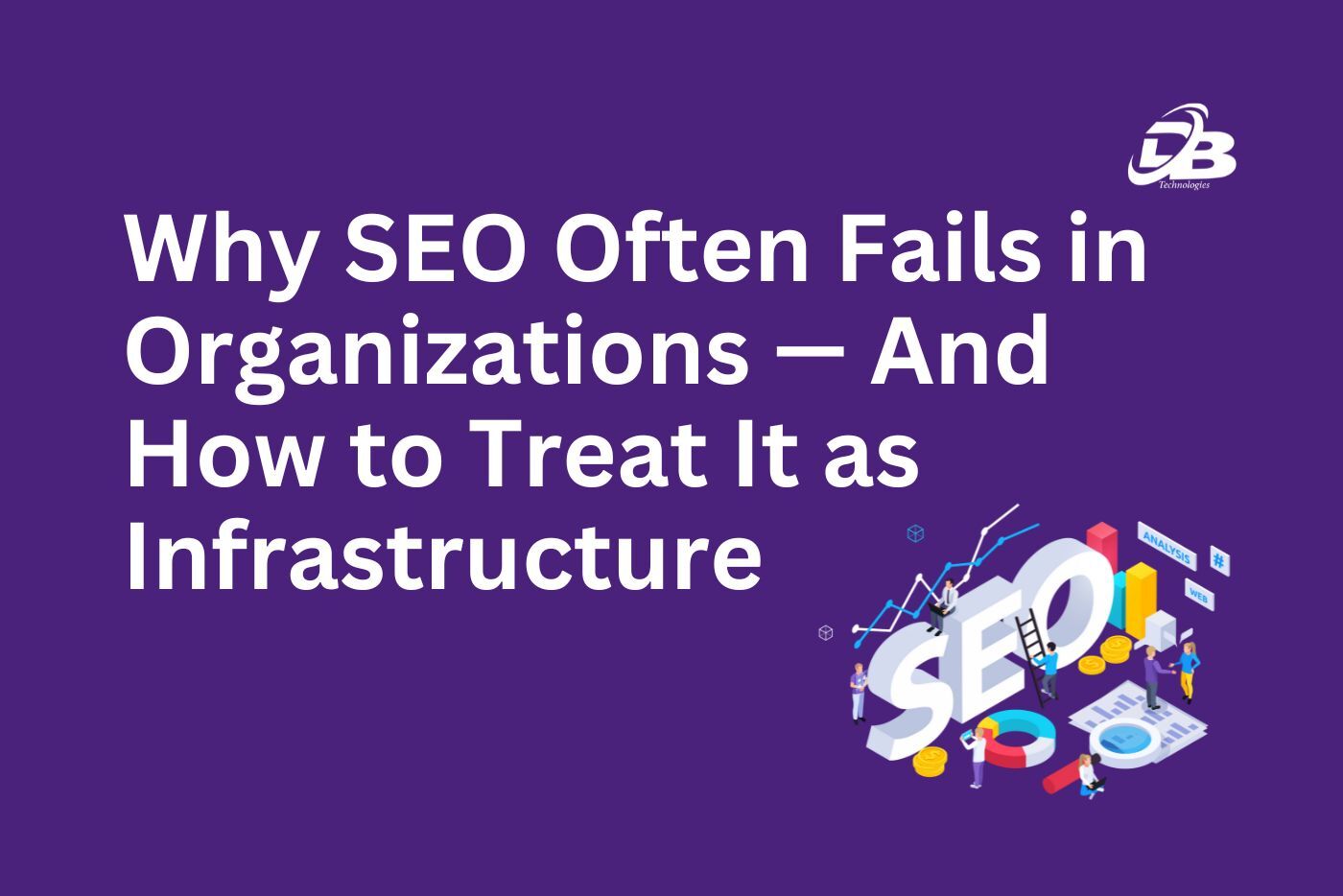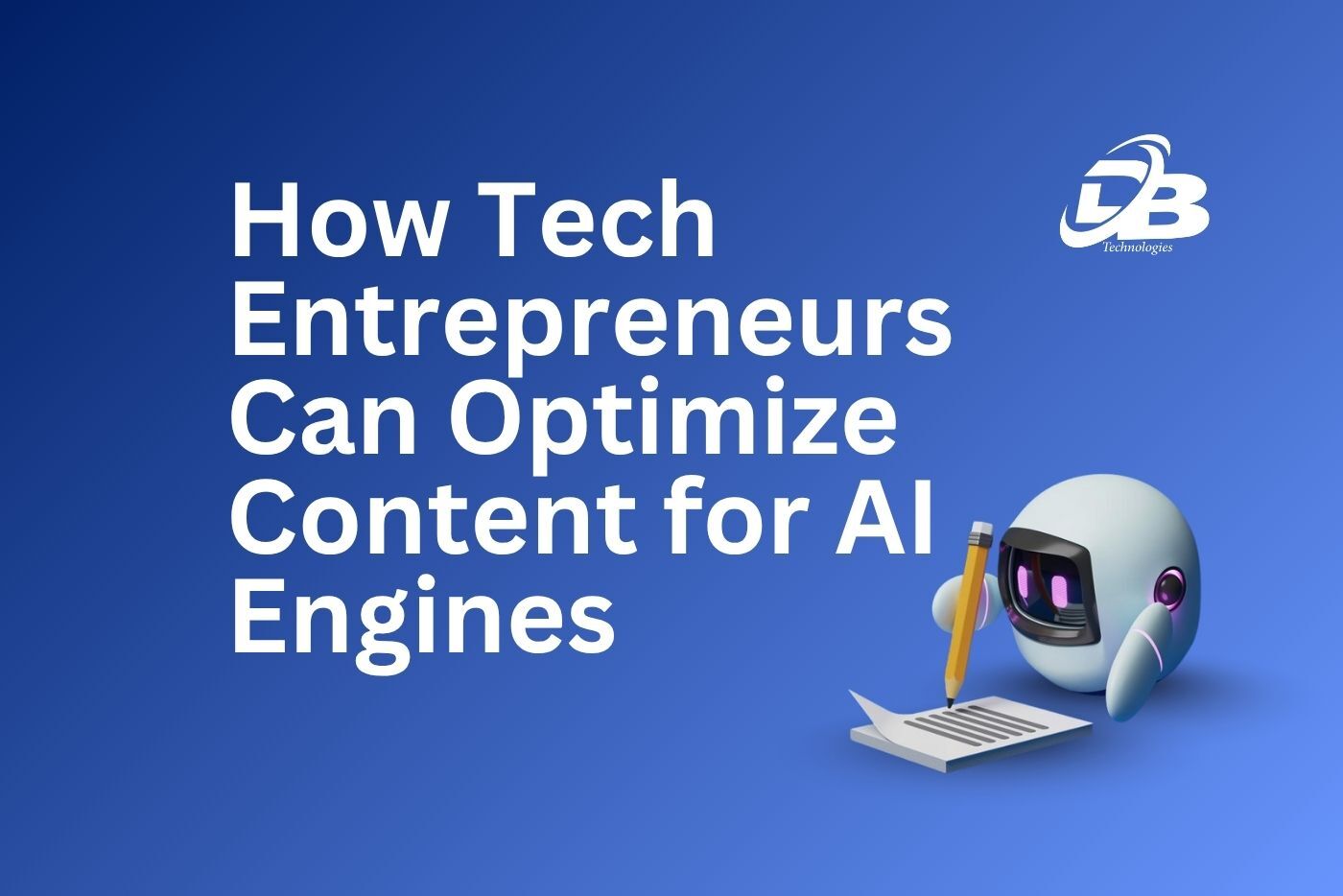
SEO isn’t magic; it’s a lot of hard work and coordination. Yet when organic traffic disappoints, companies often blame algorithms, bad luck, or “poor execution.”
In truth, SEO usually fails because of how a company is built, not because of the team’s skill level. Search experts agree that the real barriers are structural , how people, processes, and budgets are arranged.
As one SEO leader puts it, “the real obstacles aren’t a lack of knowledge or talent. They’re embedded in how companies structure ownership, prioritize resources, and treat SEO as a tactic.
It’s infrastructure” In other words, if you leave SEO till the last minute, bolt it on to a finished site, or scatter responsibilities across silos, SEO will struggle.
Many startup founders (and frankly, big enterprises too) don’t realize this at first. You might assume a modern website plus some keywords is enough, but hidden forces can sabotage your efforts.
For example, Bill Hunt found that even a $50M enterprise with a skilled team and strong content was failing in search, not due to technical issues, but because of how the company worked. He found “no presence for nearly 400 million (non-branded) queries” and “93% of 130 million queries tied to implementation-specific searches” were missing in organic search. Why?
All the content existed, but it was buried or hidden in PDFs, a classic sign that SEO was an afterthought. As he explains, “This wasn’t a content gap, it was a mindset and infrastructure failure”In short, you can blame Google, but you’ll usually discover the real culprit is something inside the organization itself.
The Hidden Forces Behind SEO Failure
Too often, companies treat SEO like a random marketing channel instead of a system that needs planning and support. Several experts have mapped out the structural SEO challenges that derail progress.
One expert highlights five “hidden forces” sabotaging enterprise SEO. These include siloed ownership, conflicting KPIs, political turf wars, and aversion to change.
Richard Naimy, another SEO strategist, said, “When systems conflict, incentives misfire, and culture resists change, SEO becomes reactive and political”.
We have listed some of the common roadblocks :
1) Silos and distributed ownership: Often everyone “owns” a piece of the website. Product managers own UX, branding owns messaging, IT owns the CMS – so who owns SEO? When “everyone owns it, no one is accountable” The site ends up optimized for internal org charts, not for how customers search.
2) Incentive misalignment: Each team chases its own metrics. Developers are judged on speed, content folks on brand voice, sales on conversion, etc. Nobody’s bonus is tied to organic search. This classic “KPI trap” means collaboration stalls and high-impact SEO opportunities slip through the cracks.
3) Slow execution and gatekeeping: Even when SEO issues are spotted, getting them fixed can take months. Content updates languish in legal or branding queues, dev tickets sit behind more urgent bugs, and changes to site structure require expensive IT sprints. Marketers end up saying, “We submit a ticket and nothing happens”, a political bottleneck that kills velocity.
4) Erratic budgeting: Many companies pump money into SEO tools or content after a spike in traffic, then slash the budget when metrics dip. Research shows, stop-start funding “destroys momentum.” SEO is a slow burn, so cutting investment midstream often reverses any gains. In one study, organizations with steady SEO programs saw a 571% ROI over 3 years versus fits-and-starts.
5) Lack of leadership buy-in: Finally, if executives treat SEO as just a “line item” or don’t understand its timeline, it will stay underfunded. Without senior leaders championing it, SEO programs rarely break out of trial mode
When you add these up, it’s no surprise that even the best teams struggle. One SEO expert sums it up: “Enterprise SEO doesn’t fail because of Google. It fails because of the organization behind it.” Blaming individuals or tactics misses the point. The fix isn’t another audit , rather it’s re-designing how your company works.
Treat SEO as Infrastructure, Not a Tactic
So, the question arises, what’s the better way to approach SEO?
According to a seasoned expert, “search is not anymore about reacting to keywords, it is rather about organizing your whole online presence in a way that it can be found, understood and is in line with the customer’s path”
When done right, SEO “becomes the connective tissue across content, product, and performance marketing”
Embedded SEO works like this: when you add new features or content, you automatically ask, “How will Google index and surface this? What keywords or structured data are needed?”
Your CMS and dev workflows are set up for SEO , think clean URLs, schema markup, fast loading, mobile-friendly design, without extra tickets. Your content team writes with search intent in mind.
Marketing budgets account for content creation, link building, and technical fixes. This approach unlocks long-term, compounding benefits.
An expert says,, investing in “SEO infrastructure” yields scalable, evergreen visibility and ever-lower acquisition costs over time. In other words, you get persistent organic growth, because SEO is no longer a one-off campaign but a high-leverage system.
Done right, SEO delivers:
1) Scalable, evergreen visibility across products and regions
2) Lower marginal acquisition costs as rankings compound
3) Faster adaptation to evolving user needs and market trends
4) Alignment between product, content, and user experience around real customer intent
These outcomes don’t happen by accident. They require the same discipline as any infrastructure project. As one analogy goes, just like investing in cloud servers gives engineering teams agility, investing in SEO infrastructure gives product and marketing teams commercial agility.
You end up with a site that’s faster and more discoverable because SEO best practices are baked into the code and content.An efficiently functioning SEO operation also reveals those issues which are less obvious, such as vague messaging, content gaps, and even product problems. So, in essence, it works as a ‘health check’ for your customer experience.
A few Real-World Examples
1. Big Enterprise, Big Missed Opportunity
Imagine a large enterprise with a marketing budget of half a billion dollars. Despite the company’s teams having a fantastic website, a wealth of content, and a dedicated SEO unit, the number of organic leads remained stagnant.
A deep analysis found why: their site architecture was designed around company departments, not user needs. Important user queries, from early research questions to technical specs, were hidden deep in PDFs and support docs.
The team “had no presence for nearly 400 million (discovery] queries,” and missed “93% of 130 million (product-specific) queries” In short, potential customers couldn’t find the content they needed.
To management’s surprise, the content existed, but Google couldn’t find it. In this case, SEO was simply not thought of as part of the user journey. The SEO lead bluntly concluded, “This wasn’t a content gap – it was a mindset and infrastructure failure”.The remedy? Re-architect the site and content around real queries, not internal menus, and give SEO an engineering-led priority.
2. Startup SEO Pitfall
Even small startups feel these challenges, albeit on a smaller scale. A common scenario: a founder builds a great product and site, maybe hires an agency for “SEO,” then moves on.
Months later, traffic is stagnant. Why? Often the mistake is treating SEO as a one-time task. A startup marketing blog captures this well: “Believing SEO is just a one-time thing is a definitive reason for failure.”
In other words, “set it and forget it” kills search visibility. Why? Search algorithms and user behavior change constantly. A site that isn’t actively updated, linked, and fine-tuned will drift backward.
In practice, if your pages haven’t been refreshed or optimized in a year, Google may drop them down the rankings. As one post warns, “SEO is what you do to push your website on the search engines. If you’re not there, you don’t exist.”
It’s a harsh truth, very few clicks go past page one of Google, so any lapse can make your site effectively invisible. For a startup, this usually means pipeline dries up unexpectedly. The solution is continuous effort, regularly publish quality content, update old posts, and monitor rankings.
These two examples show the spectrum of “structural SEO challenges.” Whether it’s a 500-person org or a 5-person startup, the answer is similar, integrate SEO into your DNA.
Practical Tips to Build SEO Infrastructure
How do you actually make SEO part of the infrastructure? Here are some concrete steps:
1) Assign clear ownership and governance. Don’t leave SEO to chance. Give it a sponsor at the leadership level (e.g. Head of Marketing or Product) who treats SEO like a business priority. Establish simple rules: for example, no new page goes live without an SEO review. When SEO is treated like infrastructure, it needs “the same discipline used in finance or engineering”, clear processes, budgets, and reporting.
.
2) Unify your metrics and data. Set up one shared analytics dashboard so everyone reports from the same numbers.Mismatched reports are a red flag. If marketing uses GA4 while engineering tracks clicks in a custom tool, alignment is impossible. Adopt one “single source of truth” for organic traffic and rankings. This way, product, dev, and marketing can all see SEO trends and priorities without debate
3) Incorporate SEO into your planning. SEO work should be included in each development phase or content calendar. For example, whenever a feature or page is being launched, there should be a requirement for an SEO checklist, keyword research, meta tags, internal links, schema markup, etc.
One practical fix is to add SEO bugs into your agile backlog with defined SLAs.Treat routine SEO work like maintenance: schema changes, URL redirects, and content tweaks should be part of regular engineering cycles.Don’t wait for a “content audit”; bake SEO review into the process.
4) Invest steadily. Avoid the feast-or-famine approach to SEO budgets. Allocate a consistent monthly budget and resources, even if short-term results are modest.
Research shows that sustained investment “consistently outperforms reactive budget cuts”For instance, one company that cut SEO spend in Q2 only to restart it in Q3 found their rankings plummeted when funding paused.
SEO gains compound over time, so think of the budget like an investment in infrastructure (building roads) rather than a marketing campaign (buying billboard space)
5) Build the technical foundation
Your tech stack should allow for SEO as a core capability. Find a CMS and tech workflow that will make it easy for marketers to make SEO-friendly changes.
For example, it should be trivial to update title tags, add alt text, or tweak schema without months-long IT tickets. As one SEO guru puts it, sites that “embed SEO principles into their CMS and development workflows” end up “more findable, interpretable, and durable”Techniques like automated sitemaps, built-in structured data, and performance optimizations ensure your infrastructure doesn’t become an obstacle.
6) Foster an SEO culture. Make SEO part of your company’s language. Educate product and content teams so they understand search concepts like intent and indexing.
Create a “roadmap” that includes SEO goals alongside feature goals.For example, if marketing is planning a new blog post, involve the SEO analyst from the start to align keywords and angles. In practice, one agency advises having a “shared language” and “clear SEO checkpoints baked into workflows” When non-SEO staff can speak in terms of search visibility and traffic, you break down silos.
Wrapping up
SEO isn’t a one-time trick; it’s a long game that thrives on structure and consistency. In today’s market, the biggest gains often come from getting the basics right , and that means reorganizing around search.
As an experts said, “To win in today’s environment, SEO must be commissioned like infrastructure: planned early, engineered with purpose, and connected to business strategy.” In other words, treat SEO like part of your company’s foundation, not just an add-on tactic.











